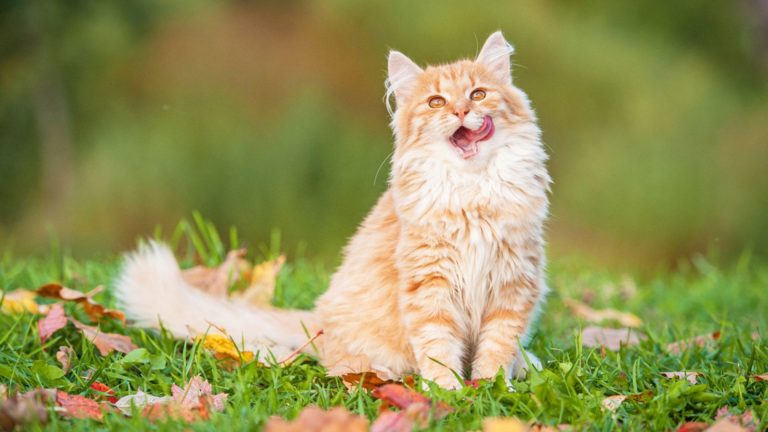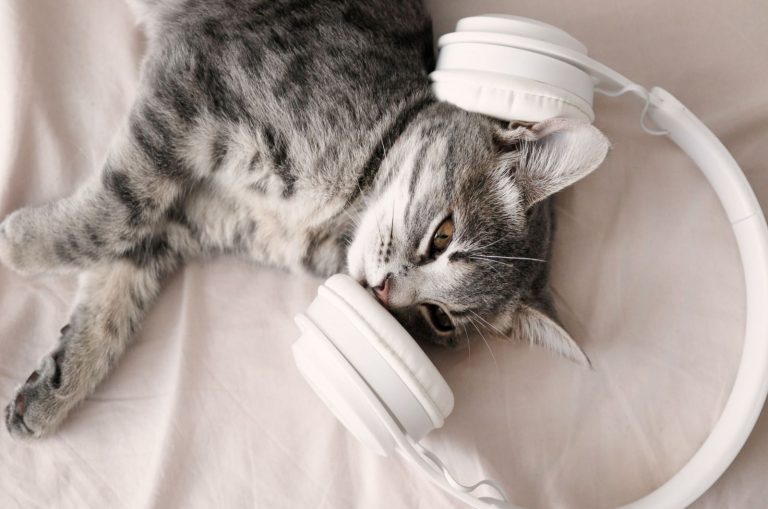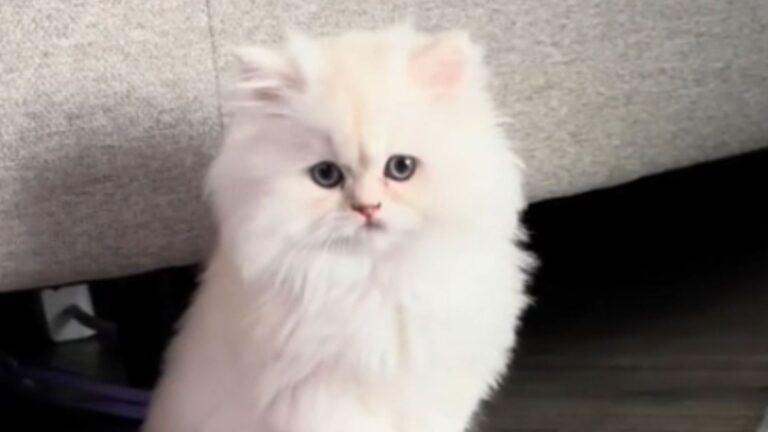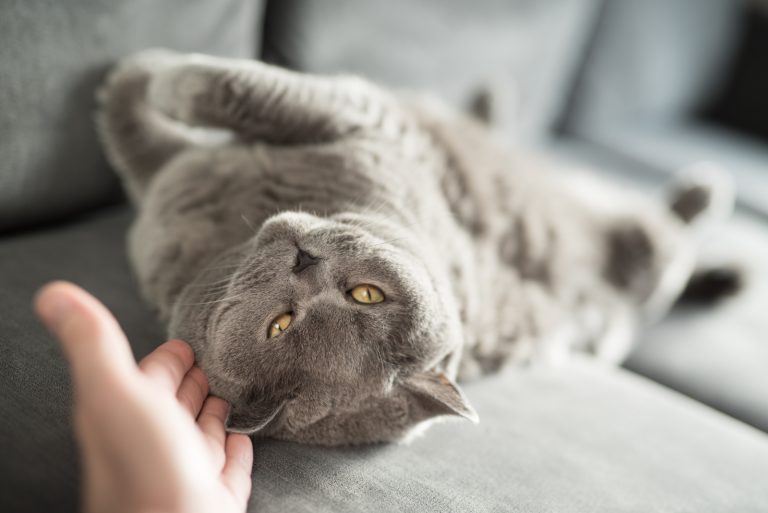Cat Peeing Over Edge Of Litter Box: 13 Reasons & Solutions
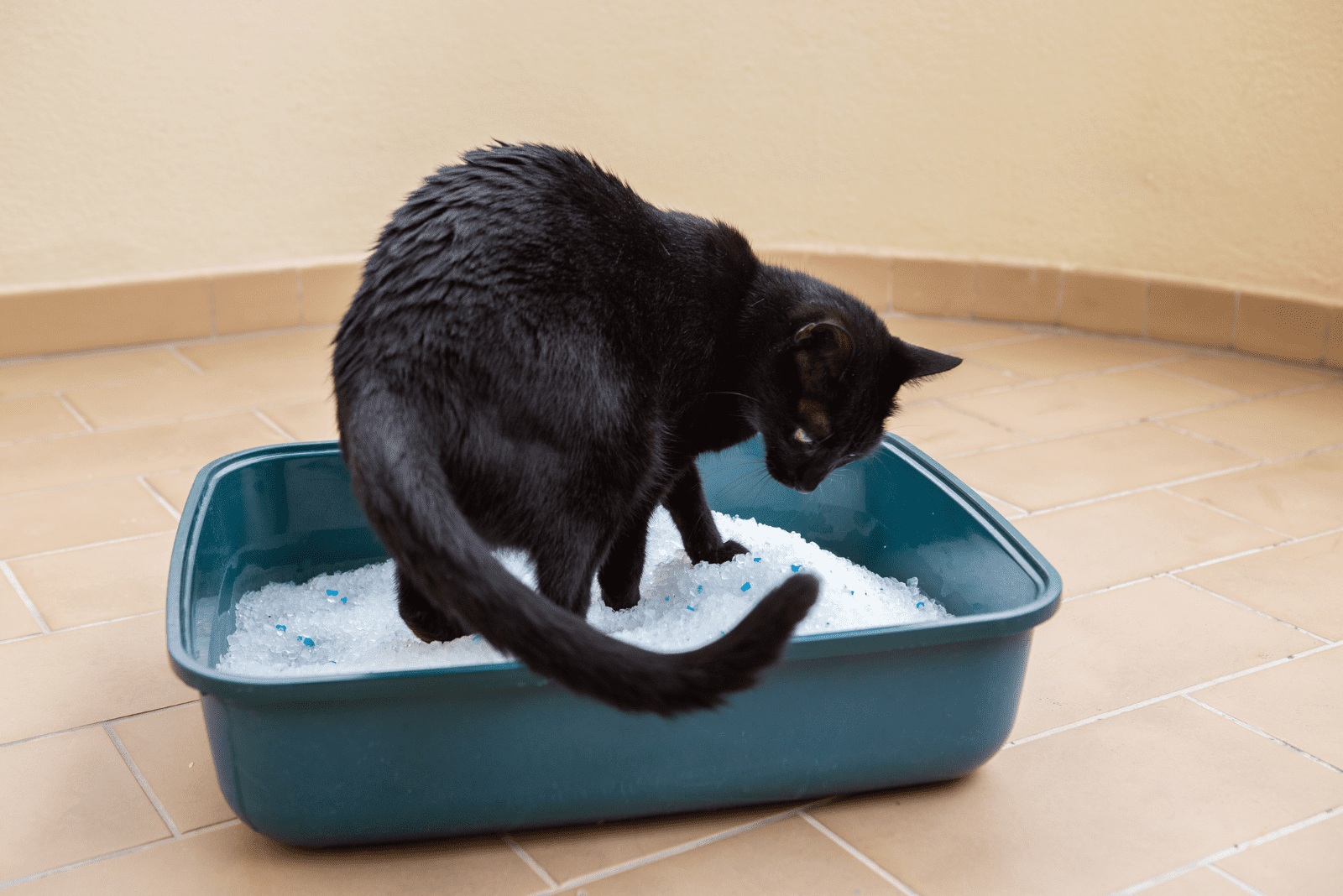
Is your cat peeing over edge of litter box ? It is frustrating, isn’t it?
After all – the litter box is there for a reason – to keep your cat’s urine safely contained and away from other surfaces. Your cat peeing over the edge and on the floor or even against the wall is very inconvenient, to say the least.
There are numerous potential reasons why your cat is peeing over the edge of the litter box.
Maybe the litter box is too small, or perhaps your cat doesn’t like the type or amount of litter. It could also mean your cat is experiencing some health issues or feels the need to mark its territory.
The solution to this issue depends on the cause of the problem, and that’s the cat owner’s job – finding what’s causing your cat to pee over the edge of the litter box.
It’s probably not a job you’d choose to have, but you simply have to do it!
Continue reading to learn about the most common reasons for your cat’s little problem, as well as what you can do to fix it!
Cat Peeing Over Edge Of Litter Box: Should You Be Worried?
Cleaning up cat pee is not a job any of us want, but some cat owners unfortunately have to deal with it- sometimes multiple times a day.
At first, you might think it’s simply a one-off accident, but after some time, you might start to worry: Is this normal, is my cat okay?
There is a chance your cat is experiencing some health issues that cause them to pee over the edge of the litter box, or even outside the litter box completely.
Aside from these, the other potential reasons are pretty harmless..
Why would a cat be peeing over the edge of the litter box? Well, there are:
• Reasons due to a cat experiencing certain medical issues
• Reasons involving litter box problems or the litter itself
• Other reasons, often behavior-related
Let’s get into more detail on every possible reason your cat has been peeing over the edge of the litter box !
Top 13 Reasons & Solutions For A Cat Peeing Over Edge Of Litter Box
1. Litter Box Issue No 1: The Litter Box Is Simply Too Small

The most simple reason for your cat peeing over the edge of the litter box is that the litter box is too small!
Did you buy the litter box when your cat was a kitten? Perhaps your kitty is all grown up now and is simply too big for the small box. Or maybe you underestimated how big your cat is, and accidently got a litter box that is too small.
Either way, if your cat does not fit properly into the litter box, their back end may be hanging outside of it!
You might be wondering: How big does the litter tray need to be?
The general rule is that the litter box should be 1.5 times bigger than the cat using it. For example, if your cat is 16 inches in length, multiply it by 1.5 and you’ll get that the litter box should be at least 24 inches in length.
If you have a Maine Coon kitten, I suggest looking into large litter boxes, as your kitten will grow up quickly! To help you choose, I suggest reading more about best litter boxes for Maine Coons.
What Is The Solution?
The solution is very simple, as you can guess – you need to get your cat a larger litter box.
Luckily, litter boxes are an easy-find in most stores and there are a lot of options you can choose from . Regular litter boxes are also relatively inexpensive, so go and get your cat a new, larger litter box!
Extra large litter boxes are especially recommended if you have a larger cat breed or a multi-cat home, so keep that in mind when shopping.
Recommended Read: Buyer’s Guide: Best Multi Cat Litter Box Solutions (2023)
2. Litter Box Issue No 2: Hello, The Litter Box Is Too Dirty!
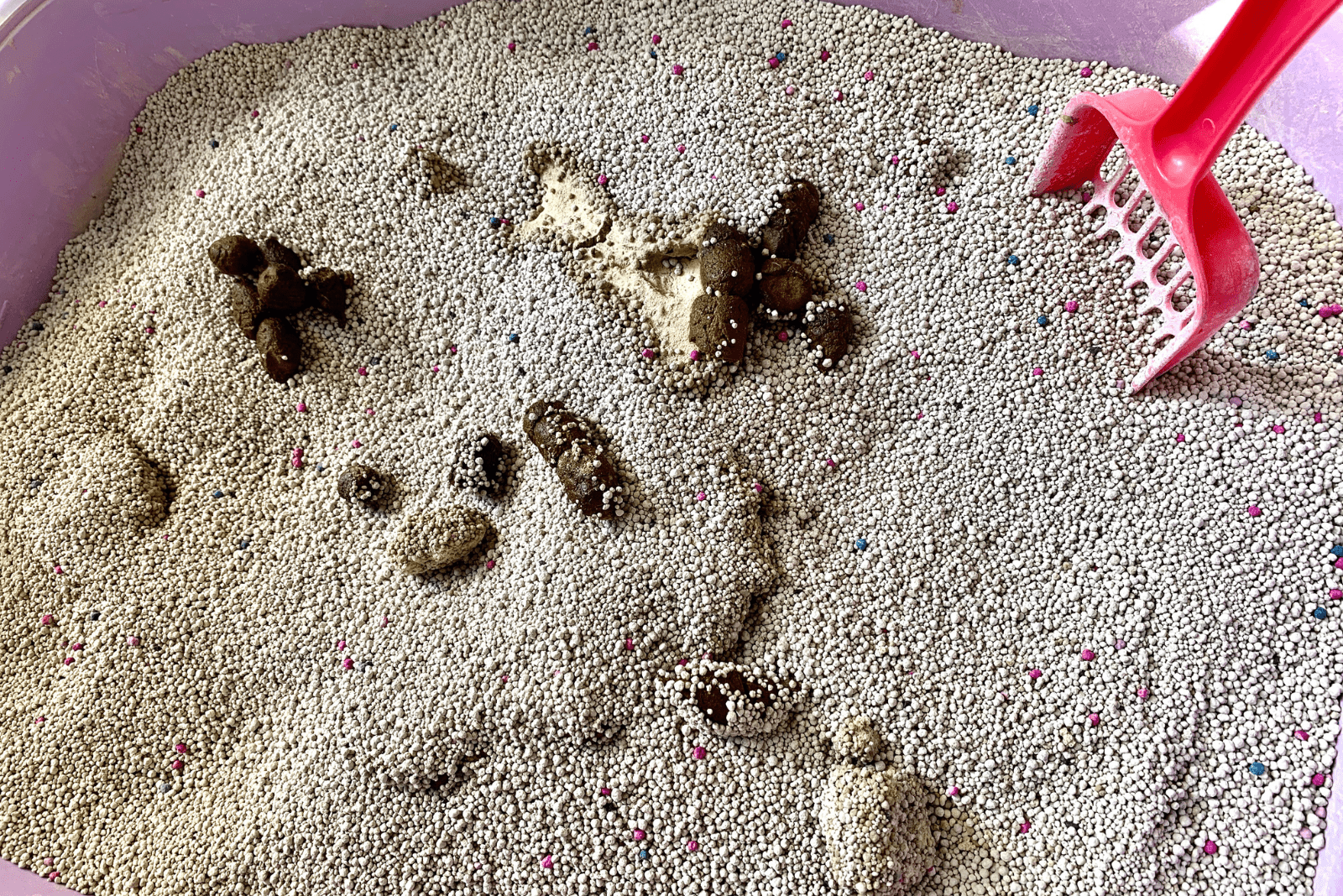
Many people consider cats to be one of the cleanest animals out there. Every cat lover knows this too; they like to keep themselves clean with frequent grooming, and they like their environment to be clean as well.
Do you think a cat will drink from a dirty water bowl? Never! Or eat from a filthy cat food bowl? Nope. So, do you think a cat will use a dirty, poop -filled litter box? Your cat’s sense of smell is far too intense to overlook this…
A common reason for a cat not using their litter box properly is that their litter box is simply too dirty. Cats don’t like peeing at spots where another cat peed before them. The same goes for the potty-business as well.
A cat might position themselves in a particular way to avoid the dirtiest litter box areas, and this might mean its back end does not fit into the litter box.
What Is The Solution?
The solution is simple – keep your cat’s litter box clean by scooping it out daily, as well as changing the entire litter at least once a month unless it needs done sooner.
Please make time to clean your cat’s litter box regularly, no matter how busy you are. Your cat will be happy and you will be happy too (not least because there’s no unpleasant odors filling the house).
3. Litter Box Issue No 3: Your Cat Is Protesting Against The Type Of Litter
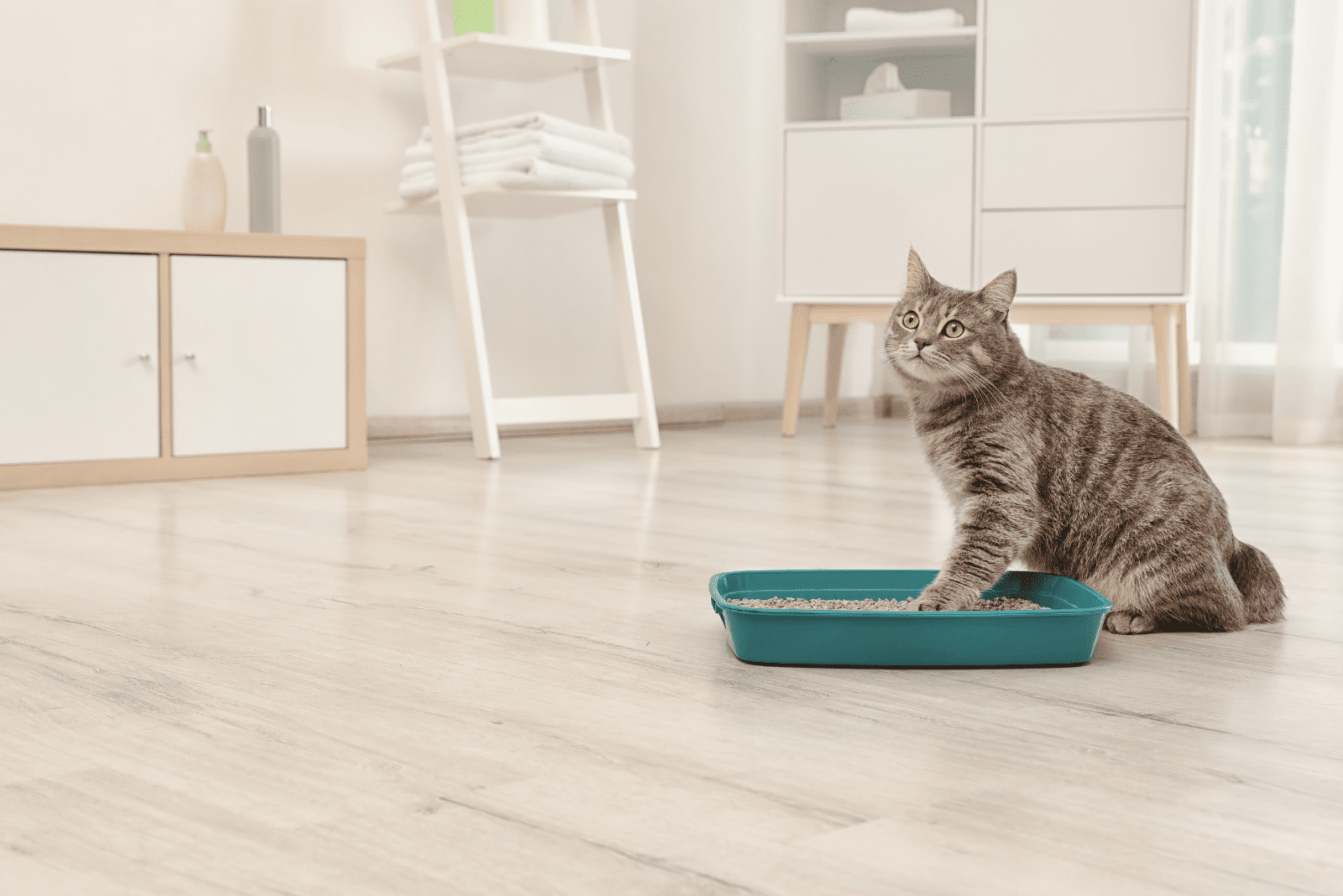
There is a chance your cat is peeing over the edge of the litter box simply because they are positioning themselves awkwardly to avoid touching the litter in the litter box.
Have you recently switched to a different type of litter? Maybe you tried to switch up the type of litter for some reason (for example because the new litter has a better price, is higher-quality, is more eco-friendly, etc.) and wanted to see if your cat would like it.
If your cat is “missing” the litter box and making a mess, chances are your cat does not like the new cat litter at al l.
For example, it might be too harsh for their sensitive paw pads or your cat simply does not like the texture of the new cat litter. It’s possible that your cat is used to clay litter and finds the new pine pellet granules too strange.
Luckily, this problem is easy to fix!
What Is The Solution?
You can switch back to the litter you were previously using or you can try another different type of litter.
You can choose from a bunch of different cat litters in the market: clumping litter, non- clumping litter, clay, silica gel, pine, wheat, grass, and even paper litter!
I’m sure you’ll find the best cat litter for your feline friend, even though it might take some time (and money) experimenting with different varieties!
Also Read: 18 Best Alternative Cat Litter For Your Cat – Check It Out!
4. Litter Box Issue No 4: There’s Too Much Or Too Little Cat Litter In The Box
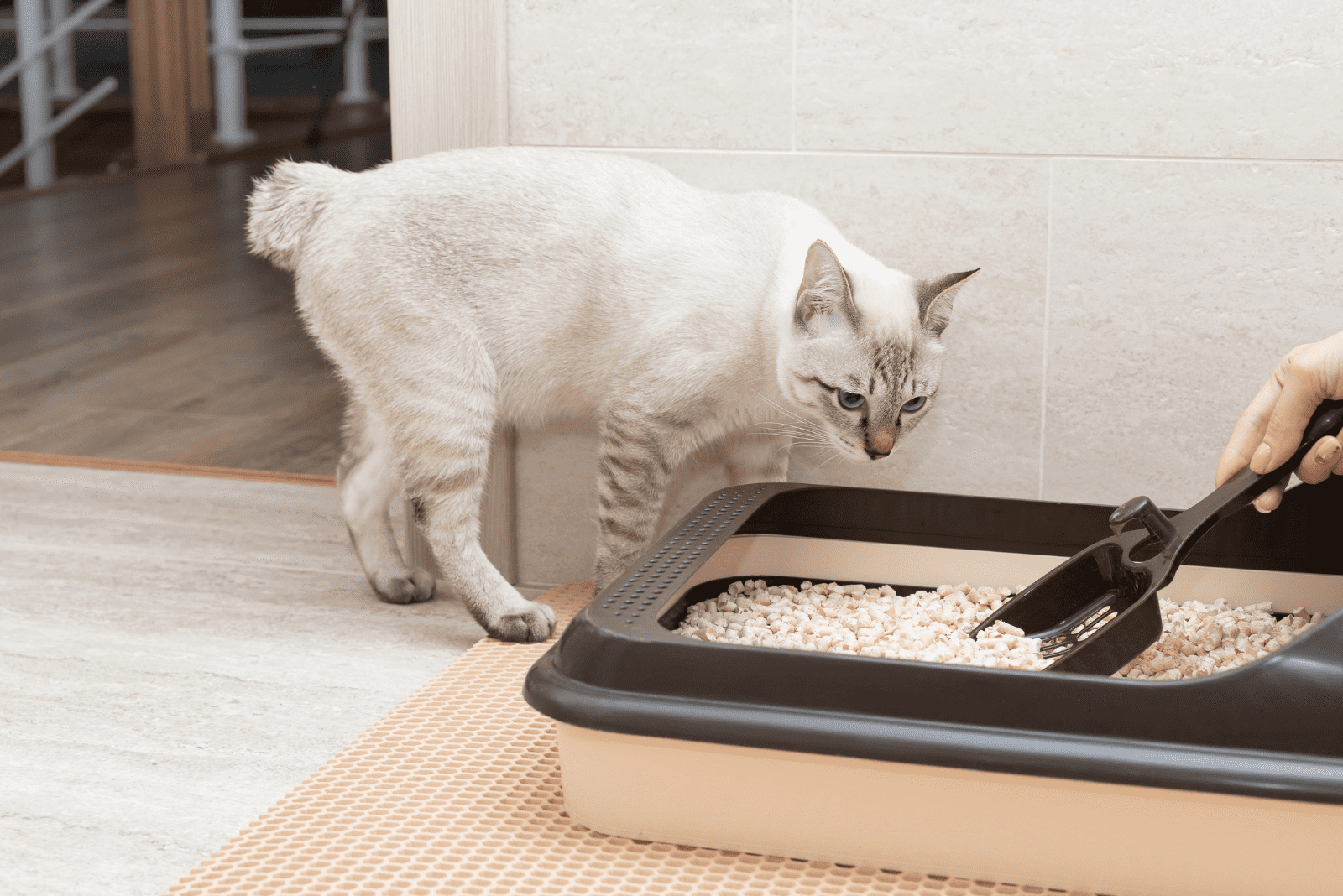
Our little furry friends are quite picky when it comes to the depth of the litter in their litter boxes. If you’ve accidentally put in too much litter, you can be sure your cat is going to let you know it, potentially by peeing over the edge of the litter box .
Now you might be wondering: Well, what is the right amount of litter in the litter box?
A rule I always follow is: 2-3 inches (although some might even say up to 4 inches). This rule goes for a single- cat litter box .
If multiple cats are using the same litter box, then it’s recommended to have up to 5 or 6 inches of litter in the litter box.
Some cats might deviate from this rule and prefer their litter to be more shallow or a bit deeper than what’s recommended.
What Is The Solution?
The solution is pretty simple – pay attention to how much litter you’re putting in the litter box. If your cat still does not like the regular 2-3 inches depth, then try pouring a bit less or a bit more and see how your cat reacts.
Try different depths of cat litter in the litter box and figure out what works best for your kitty.
5. It’s Just The Way Your Cat Pees
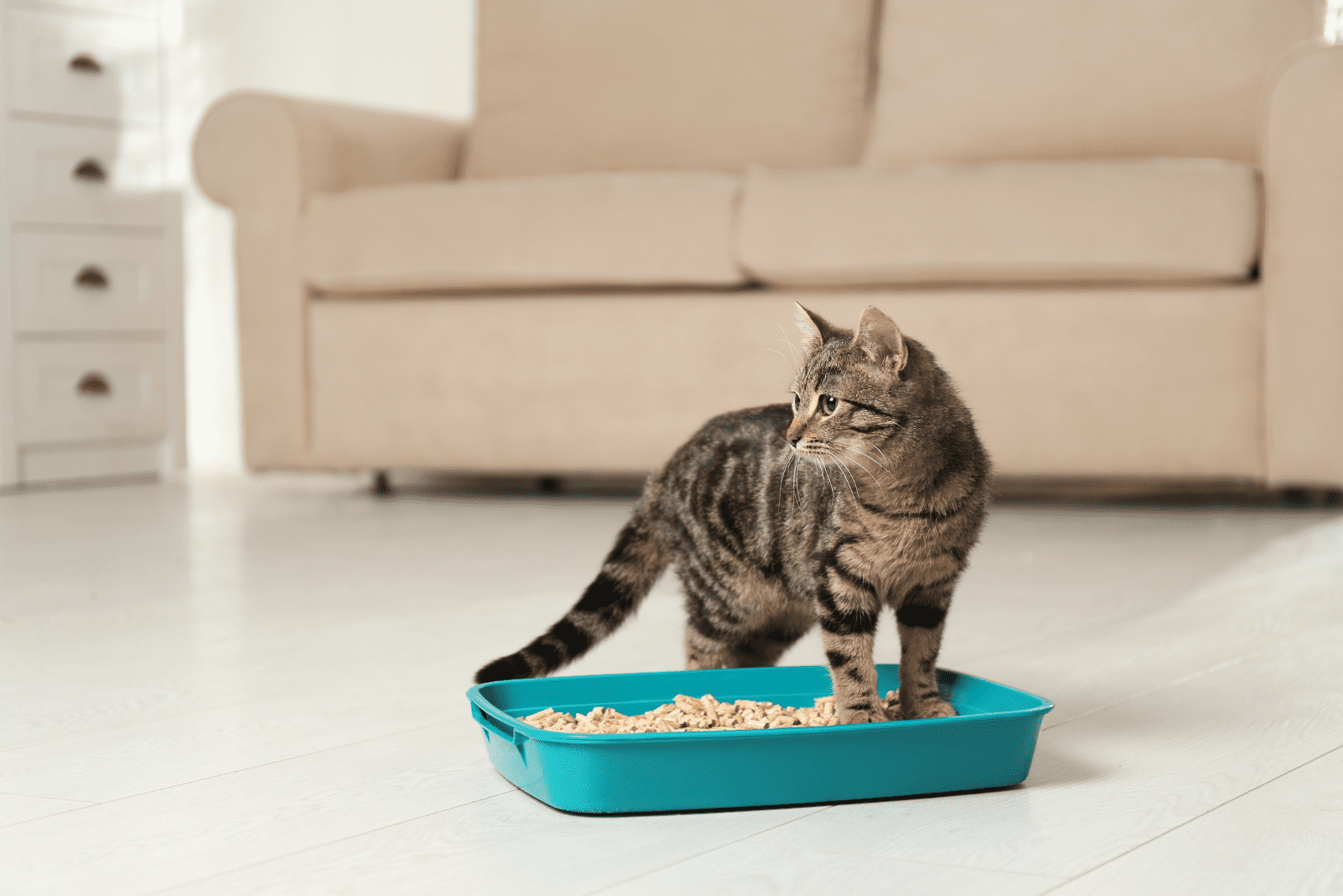
Although uncommon, the reason behind your cat peeing outside of the litter box can simply be because they don’t pee in the “right position”. What does that mean?
Some cats are so-called “vertical pee-ers”, meaning they don’t pee in the regular cat-peeing-position.
Some cats might pee standing up, causing their pee to go everywhere, others start urinating in the regular cat-peeing -position (squatting), but will gradually start standing up as they’re finishing, which also leads to urine… going everywhere.
As you can guess, the pee of these cats does not go directly to the litter, but rather horizontally and often outside of the litter box, maybe even on the walls if the litter box is close to them.
This can be a very frustrating problem for a cat owner , especially if a cat simply never learned how to pee in the proper position. It can also happen that a cat has just started doing this recently. Why? No one knows…
What Is The Solution?
If your cat is a “vertical pee-er”, then it might be hard for it to unlearn this, no matter what the cat owner tries.
At the end of the day, it’s not the biggest problem you could face and the solution is very simple – get a litter box with very high sides . Luckily, many litter boxes with high walls are available on the market, so you can choose whichever you feel is best for your cat and your home.
6. Your Cat Might Be Stressed
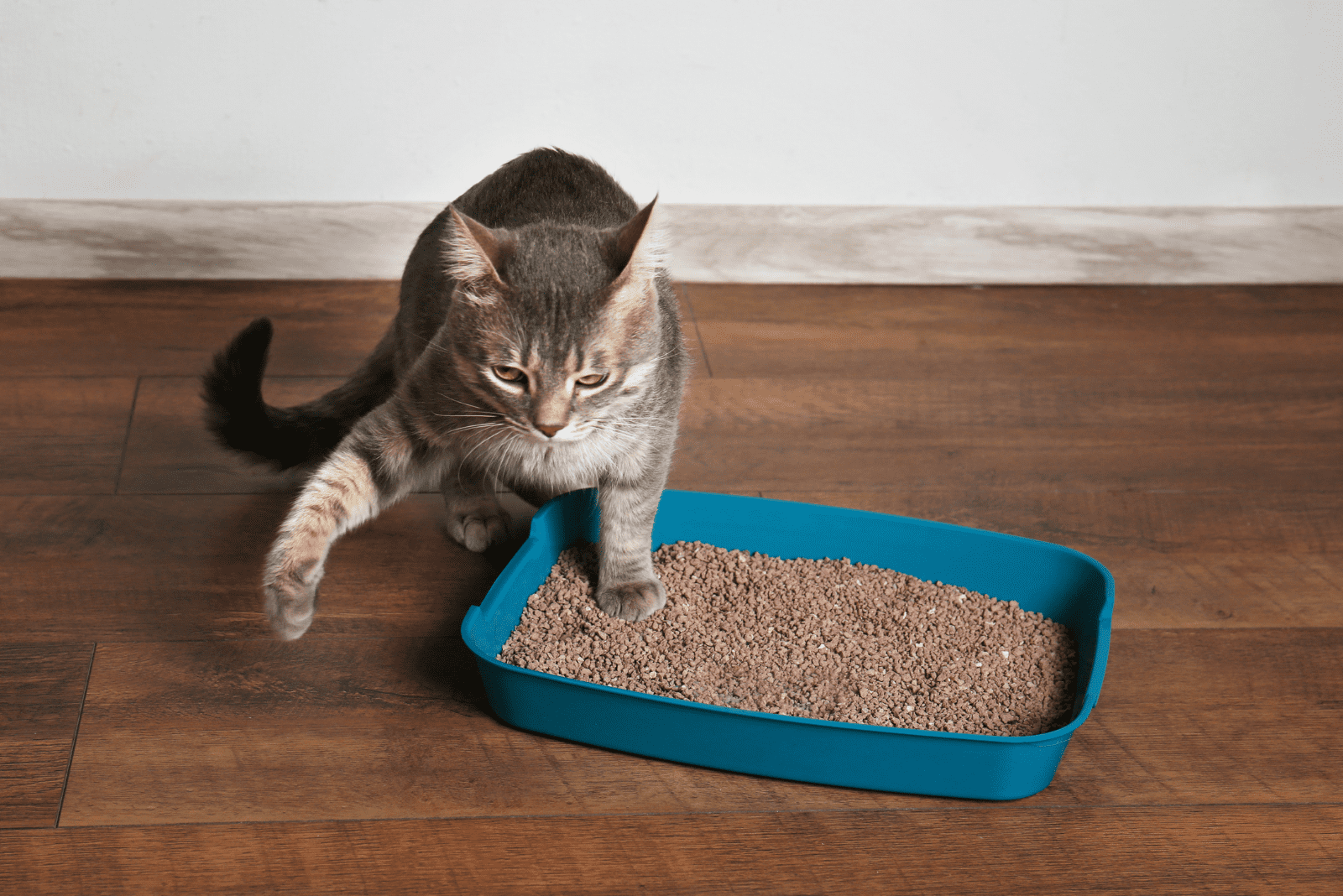
A possible reason for your cat peeing over the edge of the litter box could be because your cat is stressed. Cats are known to be creatures of routine, and even the slightest changes can cause stress for your kitty.
What exactly could be making your kitty stressed?
• A new pet in the house
• A new baby in the house
• Strangers (to your cat) in the house
• Moving homes
• Building work in the house
• Stray cats coming into your backyard
• Being petted too much if your cat gets overstimulated
Other signs your cat is stressed out include over-grooming, weight loss, poor coat condition, spraying, excessive meowing, as well as displaying any other unusual cat behaviors or experiencing a change in physical appearance.
What Is The Solution?
It’s extremely important to spot the signs your cat is experiencing stress early on. The sooner you realize your cat is not happy, the sooner you can try to fix it.
Devote time to finding out what’s causing your cat stress and try to reduce it. For example, if you know your cat doesn’t like new pets in the house, ask your friends to come without their pets (if they can) when they’re visiting.
Hopefully, that will not be a big deal to your friends, and you will be able to avoid this source of stress for your kitty.
On the other hand, sometimes you cannot simply avoid the cause of stress. For example, if you moved houses, you cannot simply move back to your old house just because your cat is stressed.
In this case, you must simply allow your cat a slow and easy adjustment to the new environment and try to comfort them in any way you can.
Managing your cat’s stress is important because prolonged exposure to stress can lead to a cat developing both emotional and physical health issues .
Suggested Read: How Long Does It Take A Cat To Adjust To New Home? Explained
7. Territory Marking
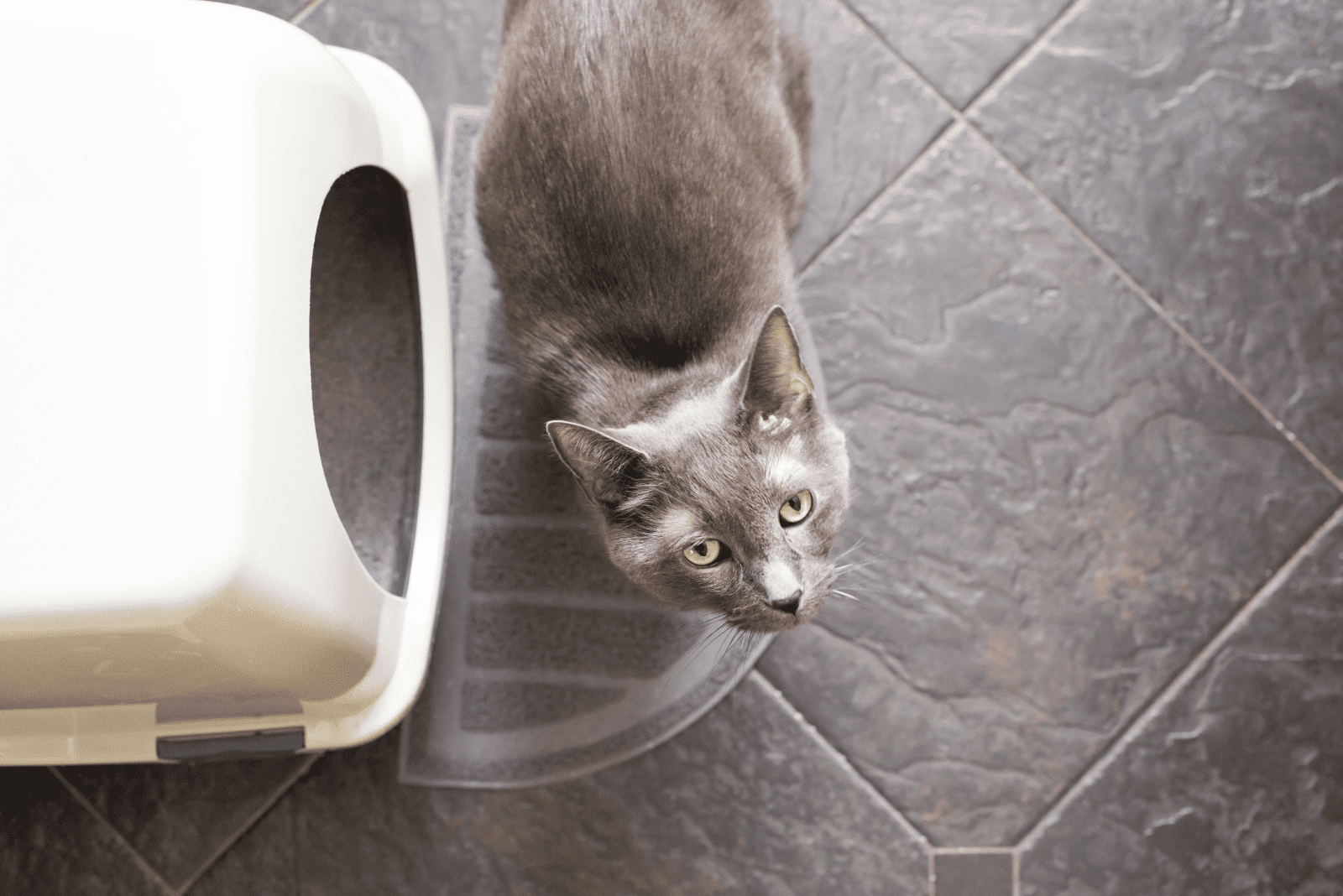
Both male and female cats are known to be very territorial. This is why a cat sprays ! Some cats might be more territorial than others, but it’s a trait shared by all cats to some degree.
Urine marking or spraying is a cat’s way to “set boundaries” around and within the territory they claim theirs. It’s a very common occurrence in non- neutering male cats , so if your cat is an intact male cat , it’s something you can expect to happen pretty often.
A cat sprays both horizontal surfaces (such as floors) and vertical surfaces (such as walls).
Felinine, an amino acid from which pheromones are synthesized, can be found in cat urine . It is especially prominent in male cat urine and is responsible for its odor.
The scent serves as a way of them marking their territory. The odor resulting from pheromones in the urine serves as a way to tell other cats “ This is mine! ”
It’s also common in multi- cat households , especially if multiple cats are using the same litter box, and one of them is extremely territorial. They may resort to peeing over the edge of the litter box to mark the litter box as their own.
What Is The Solution?
If you have an intact male cat , the best solution is to neuter them. Neutering has other benefits in addition to stopping your cat from spraying. It also makes their urine smell less intense and makes them less likely to roam the streets looking for a female cat to mate with.
If you want your male cat to have offspring and so you want to avoid neutering them, I suggest you get a litter box with high walls. You can choose either a covered litter box or an uncovered one (depending on what your kitty likes). Try looking into top-entry litter boxes as well!
You could also look into getting some pheromone – diffusers , as they’re known to calm cats down and prevent them from spraying.
If you have multiple cats in the same house, make sure each one of them has their own litter box . This is recommended even if you don’t have spraying-issues with one of the cats.
Also Read: 7 Reasons Why Is My Cat Peeing On Furniture + Prevention Tips!
8. Potential Health Issue No 1: Arthritis
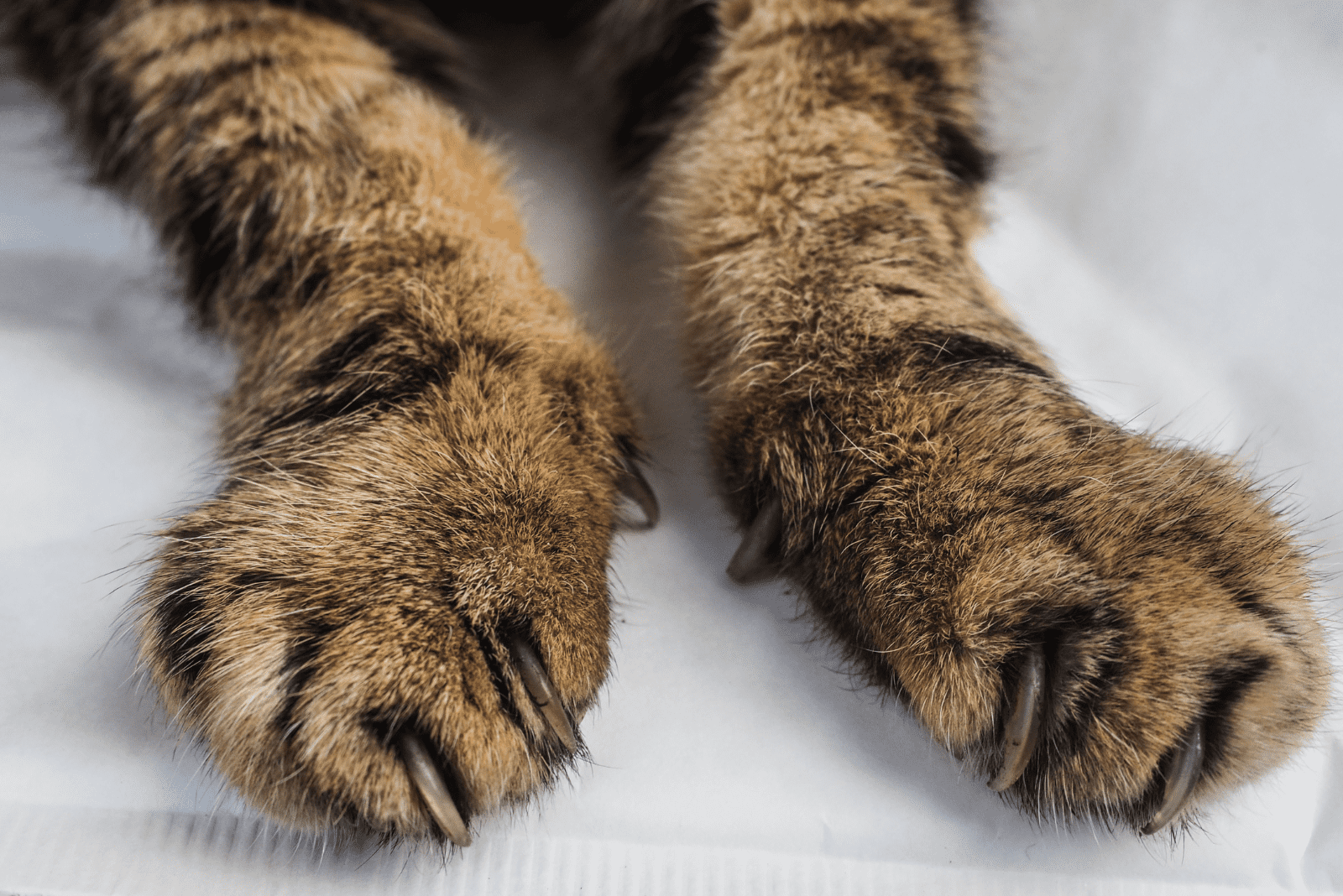
It is possible that your cat is missing its litter box due to arthritis, which is a very common condition in elderly cats . This is similar to human arthritis in that your cat’s joints swell, become inflamed, and degenerate over time. For cats suffering from this disease, the simple act of moving can be painful and difficult.
A cat with arthritis might pee over the side of the litter box simply because, even though they’re peeing over the edge, it’s the position that’s causing them the least amount of pain.
You might also observe your cat having difficulty climbing into its litter box, being reluctant to jump, or carefully using the steps.
What Is The Solution?
The solution could be getting your cat a litter box that does not have high walls, so it’s easy for them to climb into it. Also, consult your vet to see what you can do to relieve your cat from pain. Your vet might prescribe you some anti-inflammatory or pain-management medication.
You can also make your home senior-cat friendly by providing ramps, a soft bed and soft cat litter as well as keeping everything your cat needs on one floor of the house, so your cat doesn’t have to use the stairs, as this is especially painful for a cat with arthritis.
9. Potential Health Issue No 2: Urinary Tract Infection (UTI)
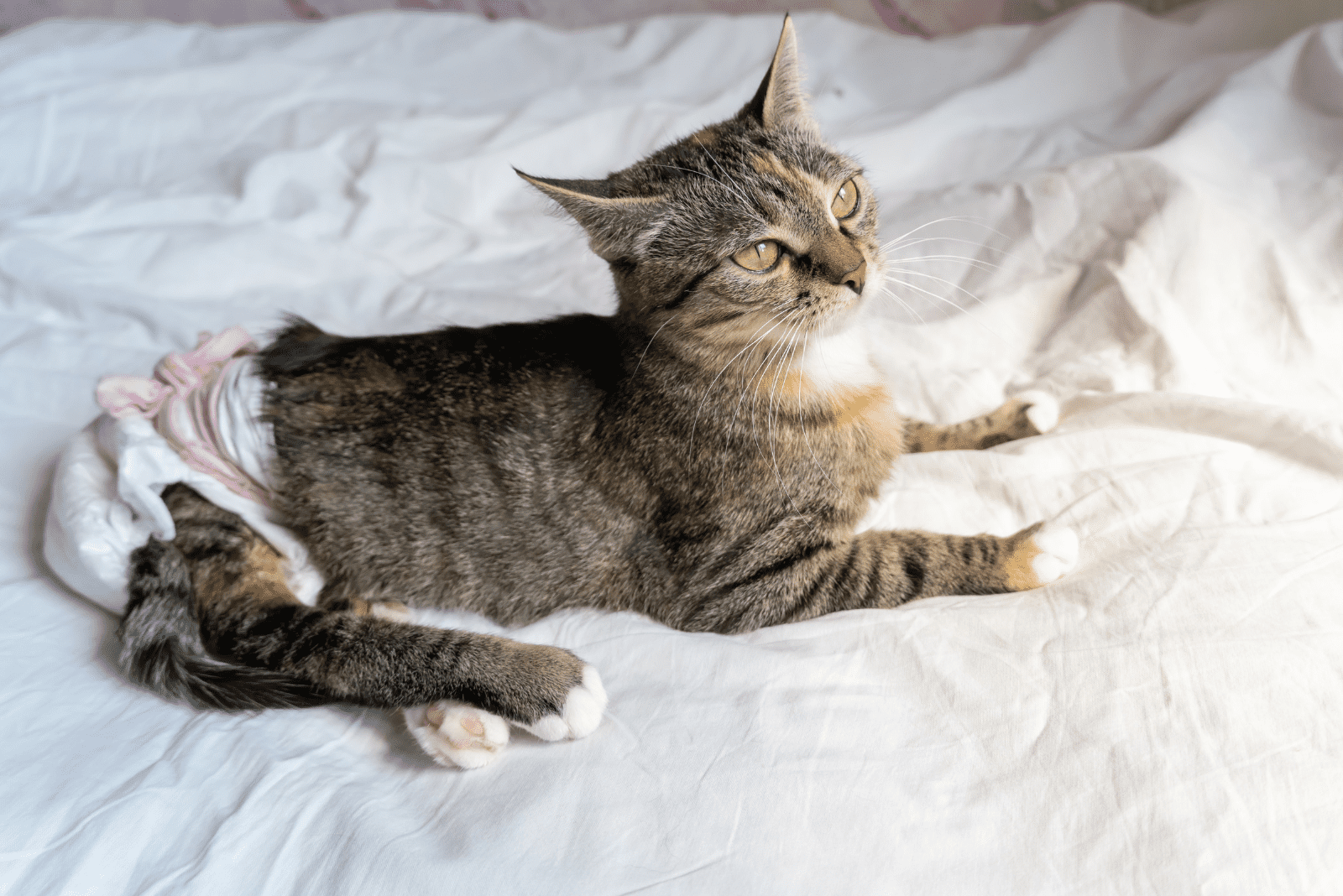
If you’re the owner of a senior cat, there is a chance they have a urinary tract infection . Feline UTI is especially common in older female cats, although younger cats can have it as well.
Feline UTI is caused by bacteria settling in the urinary tract, where they should not be present. Luckily, urinary tract infections are not common in cats, but they still can happen.
Cystitis is a type of UTI , but to be more precise, it is inflammation of the cat’s bladder. Urethritis, or inflammation of the urethra, is another type of UTI; as is pyelonephritis, an inflammation of the kidneys. All of these health issues essentially have the same symptoms.
The most common symptoms of feline UTI include:
• straining while urinating
• frequently using the litter box
• pain while urinating
• reluctance to urinate
• urinating outside of the box
• urinating over the edge of the litter box
• urine tinted with blood
• frequently licking their rear area
What Is The Solution?
A cat with a urinary tract infection needs to be treated as soon as possible. If left untreated, a UTI can become life-threatening. If you notice any of the symptoms described above, I highly suggest you take your cat to the veterinarian’s office.
The vet will most likely prescribe your cat antibiotics, and perhaps pain medication as well. Home remedies are also useful, but are not a substitute for visiting a vet!
Recommended Read: Top 9 Natural Home Remedy Antibiotics For Cats: User Guide
10. Potential Health Issue No 3: Bladder Stones
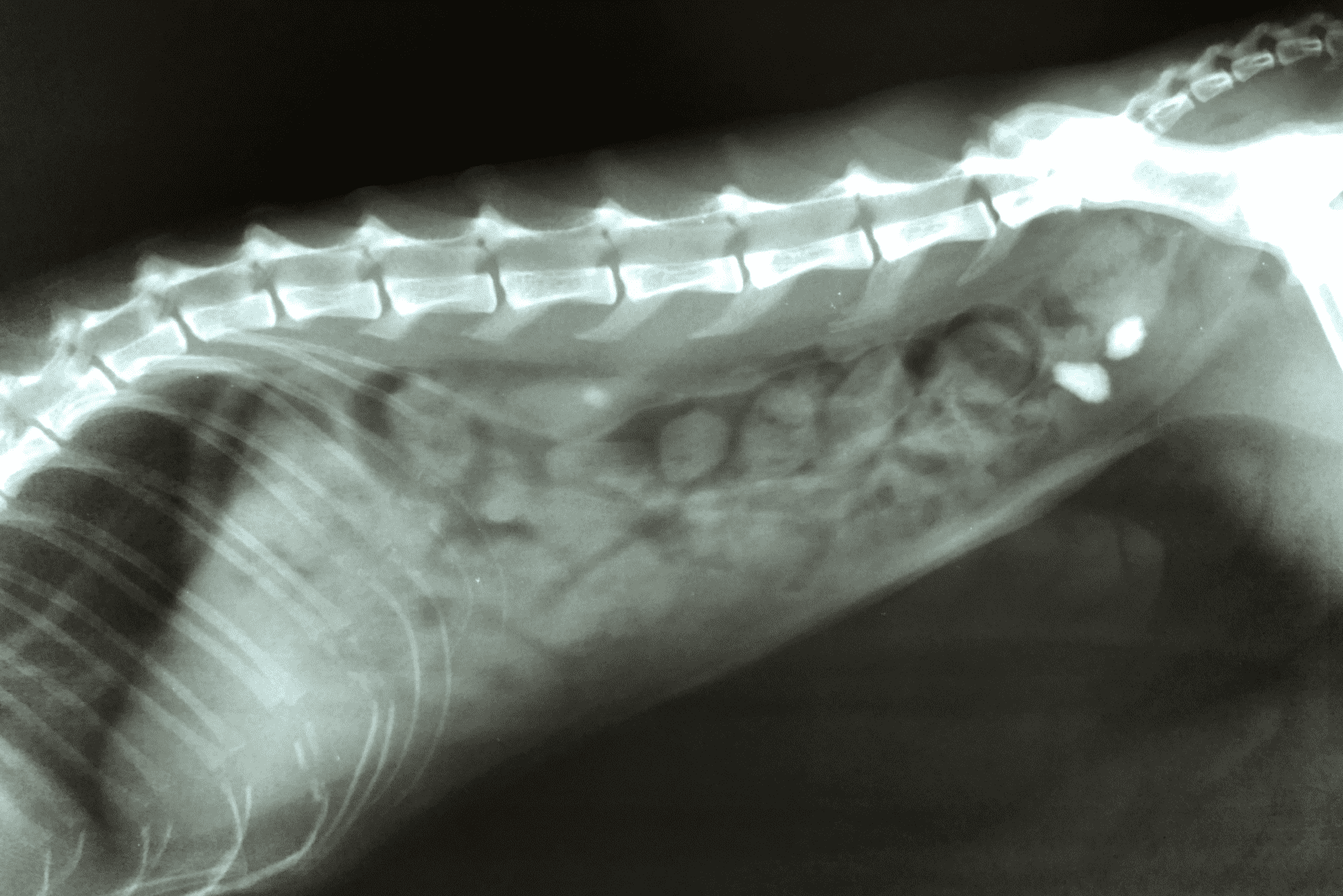
Bladder stones are essentially tiny rocks that develop in your cat’s urinary bladder. There may be one large stone, but there can also be a lot of smaller stones present. This medical condition is very painful, as any one who has experienced it can tell you, and it’s no different for cats.
These stones form because your cat’s body is not metabolizing minerals in an efficient manner, or if your cat has too many minerals in its diet. Either way, the mineral lumps will irritate the walls of the bladder, mucus will form as a result, and then the mineral lump and the mucus stick together to form bladder stones .
Common signs your cat is battling with bladder stones include:
• blood in urine
• frequent urination
• painful urination
• straining while peeing
• peeing outside of the litter box
• peeing over the edge of the litter box
• lack of energy
What Is The Solution?
If you observe your cat displaying any of the symptoms mentioned above, you should take your cat to the vet’s office as soon as possible. Having bladder stones is an infamously painful condition for humans, and it can be agony for cats as well.
Your vet will make a definitive diagnosis and provide guidelines for your cat’s (hopefully successful) treatment!
11. Potential Health Issue No 4: Diabetes

Diabetes is a medical problem that many of us are aware of, and most of us probably know a person battling it. You might not have known this, but cats can have it too. It is more common in older and overweight cats.
When a cat’s body cannot regulate the levels of sugar in the bloodstream, diabetes occurs. This affects how a cat’s body converts food into energy. As you can guess, this is extremely important and any abnormalities in this process pose a serious health risk for the cat.
Symptoms of feline diabetes include:
• drinking large amounts of water
• increased appetite
• decrease in energy levels
• weight loss
• frequent urination
• urination or defecation outside of the litter box
What Is The Solution?
Visiting the vet is the right thing to do because if your cat has diabetes, they need treatment as soon as possible.
Diagnosis and treatment of feline diabetes can be challenging . You can expect your vet to go over your cat’s medical history and question you about your cat’s dietary habits, as well as performing blood and urine tests.
You will need to make sure your cat is a healthy weight, eats a healthy diet and gets enough daily physical activity. Your cat might need insulin therapy, as well as constant health monitoring.
12. Potential Health Issue No 5: Hyperthyroidism
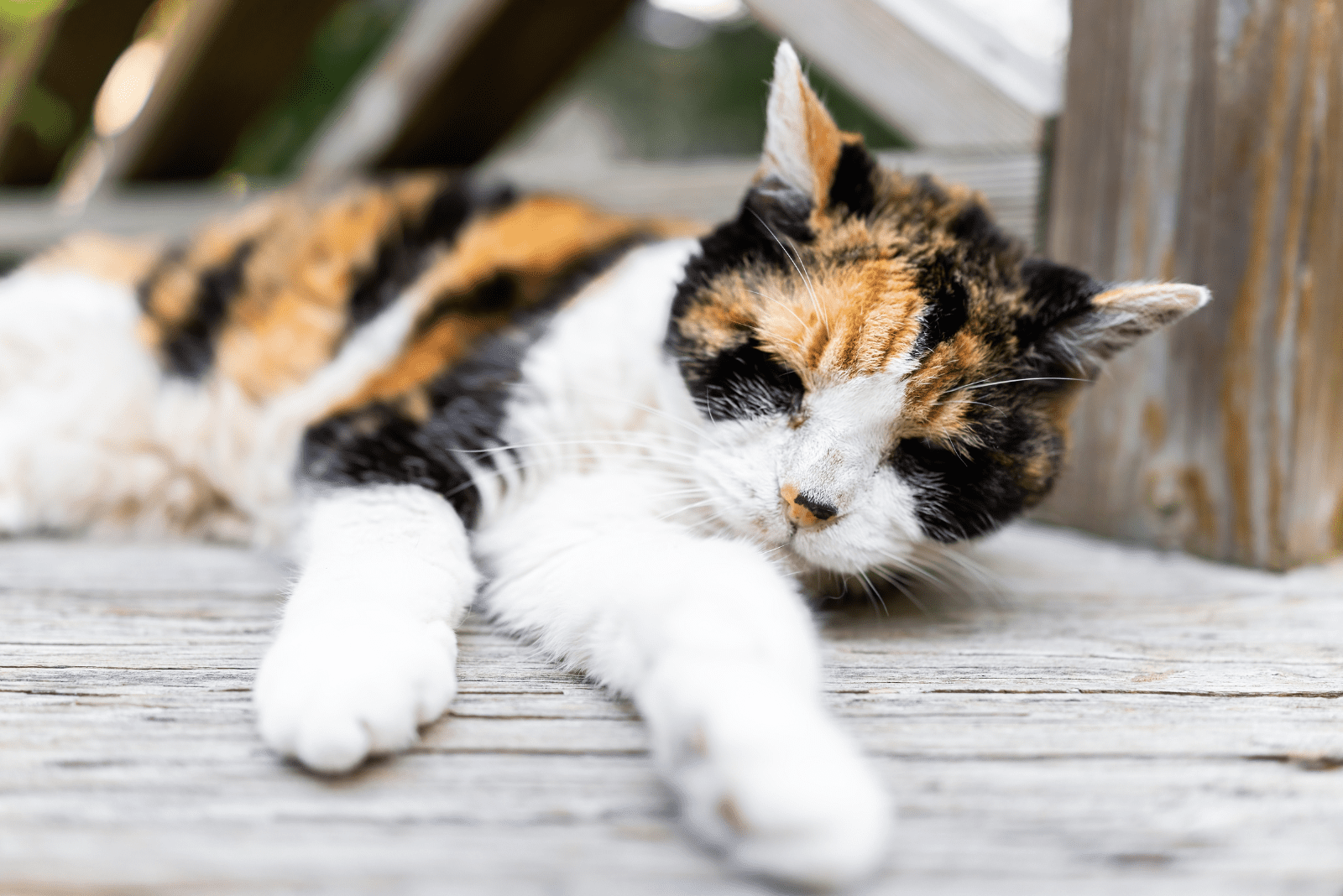
Hyperthyroidism is a relatively common issue for middle-aged and older cats . It is characterized by the thyroid gland (a gland located in the neck) producing more thyroid hormones than it should. When this happens, a cat’s metabolism increases. A high metabolic rate is not healthy, as it negatively affects the cat’s body in various different ways.
Common signs of this disease include:
• increased appetite
• weight loss
• vomiting
• diarrhea
• being overly active
• drinking more than usual
• not using the litter box properly
What Is The Solution?
The best thing you can do is visit the vet. If your cat does have this disease, they will need important medication.
A diagnosis is made by examining the enlarged gland, and checking the levels of the thyroid hormone via blood testing.
The type of medication mostly used is oral medication that must be given to a cat regularly.
13. Potential Health Issue No 6: Paw Issues
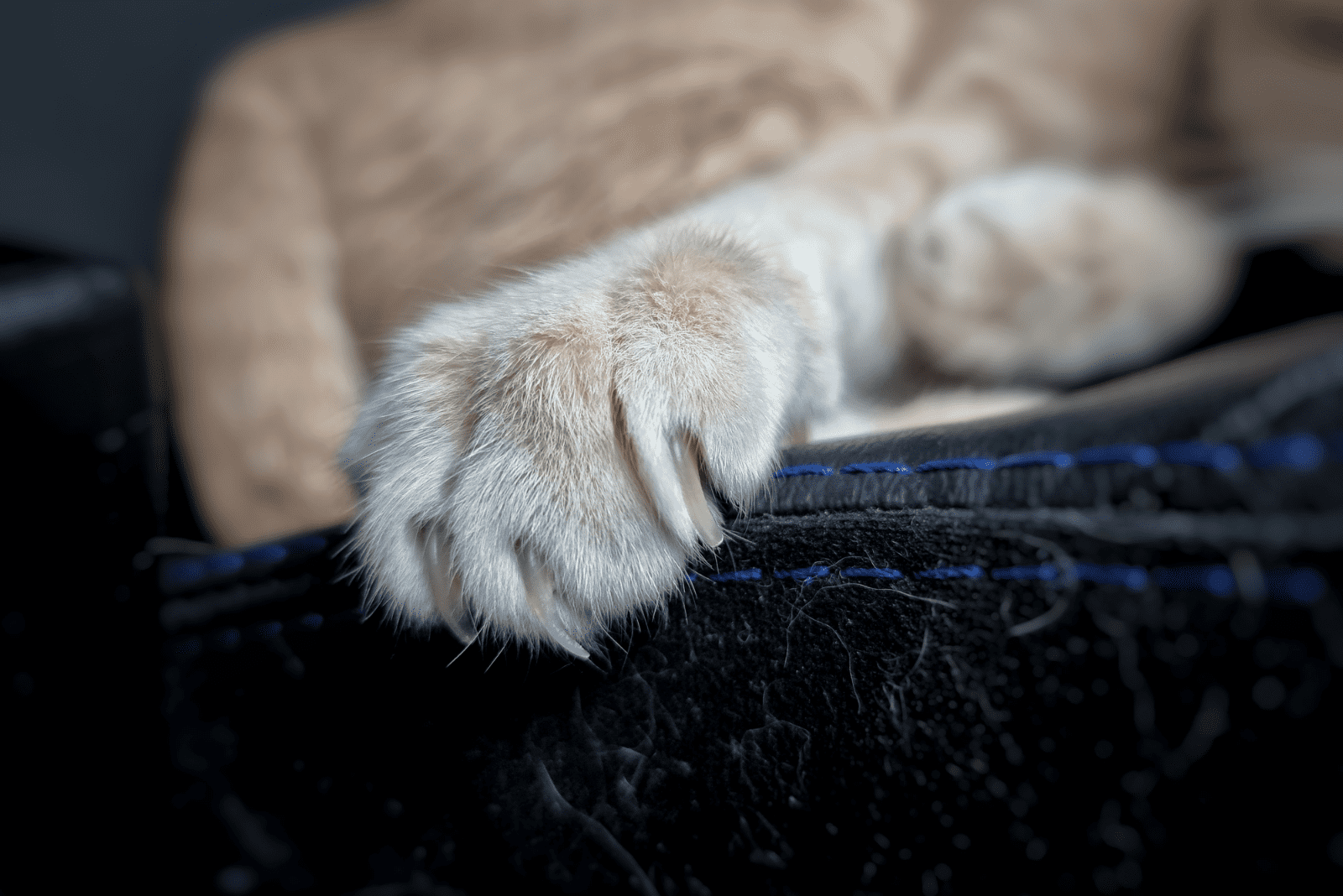
Another potential reason your cat is peeing over the edge of the litter box is that the litter is making their paws hurt. This is especially true if you know your cat has extra-sensitive paws and you’ve just switched to a new type of litter .
On the other hand, it may be that your cat has a paw injury. How can this happen?
It can happen that a cat gets injured by a small sharp rock or a piece of broken glass. As you can guess, outdoor cats are more prone to sustaining cuts than indoor cats . Injuries can lead to bacterial and fungal infections, which are never pleasant.
Ticks can attach themselves between the cat’s toes, or your cat might have suffered a burn. If it has a sore paw, your cat won’t want to walk on litter, and they may position themselves in a position that avoids the litter, but leads to the cat peeing over the edge of the litter box .
You might also observe your pet limping or being less active than usual.
What Would Be The Solution?
First, you need to find out what’s making your cats’ paws hurt. After you’ve found the cause, you need to treat it accordingly. For example, if a cat has a small thorn stuck in its paw, try taking it out and you will surely bring ease to your pet.
Not every paw issue needs a visit to the vet, although it is always a safe option. If you can’t figure out what’s making your cat’s paw(s) hurt, then you should go to the vet’s office.
If you feel the issue is something you can’t handle alone, such as a piece of glass being deeply stuck in the paw, then you definitely need to go to the vet. They might need to prescribe your pet antibiotics and/or pain medication.
Recommended Read: Cat Claw Infection – Possible Causes & Solutions!
In Conclusion
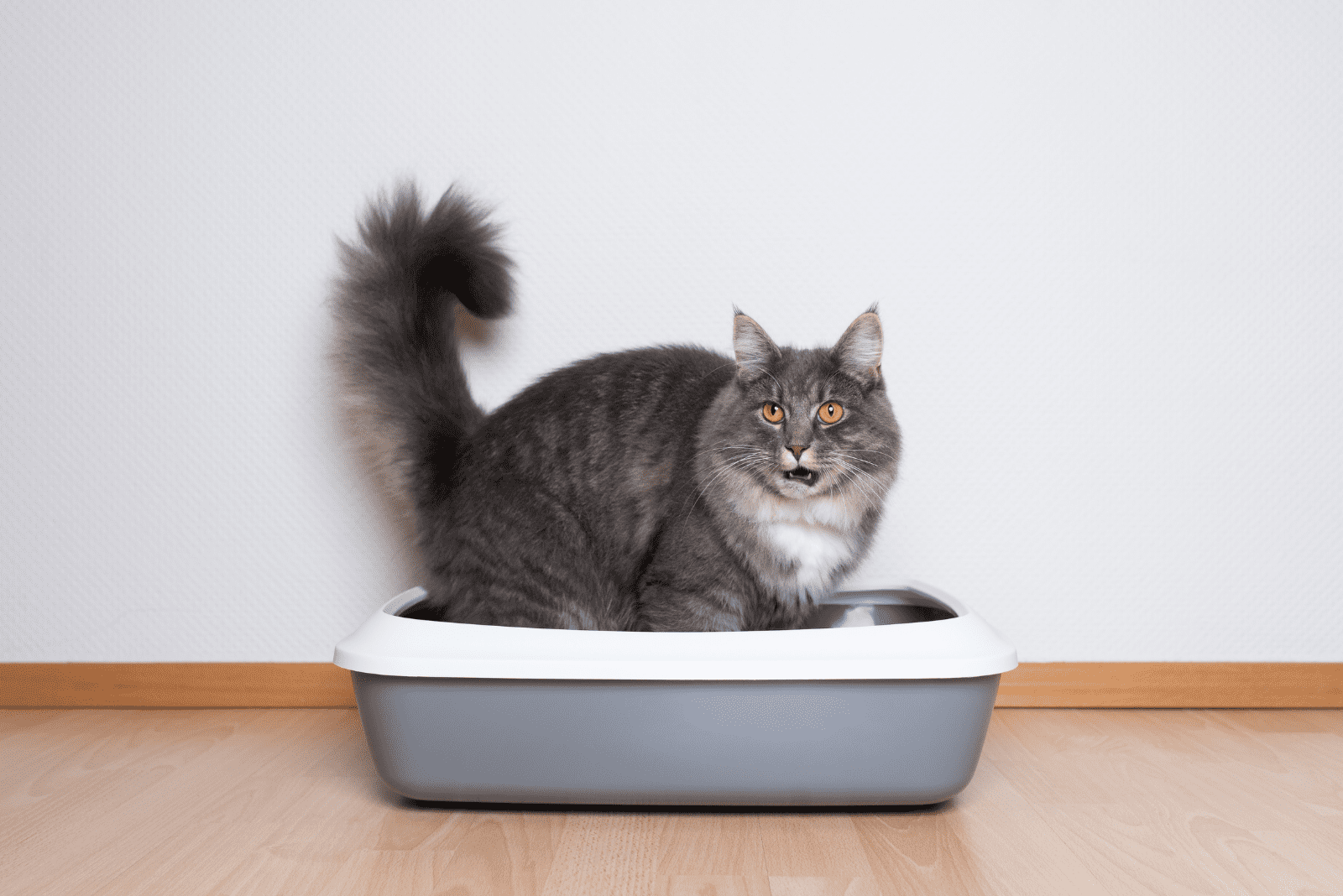
I know how frustrating it must be seeing your cat peeing over edge of litter box . Cleaning up cat urine is no one’s idea of fun so I’m sure you’re keen to find the cause of your cat’s strange litter box issue and work out how to solve it.
Potential causes of a cat peeing over the edge of the litter box include: small litter box size, cat not liking the type of litter used, or the litter box being filled with too much or not enough litter.
Alternatively, it could be your cat’s way of marking their territory, showing signs of stress, or being a vertical pee-er. It may be a sign of a medical issue, such as an UTI or arthritis.
Whatever the reason may be, it can be handled. If you suspect your cat is sick, visit the vet. If you conclude there is no way of preventing your cat from being a messy litter-box user, then simply get the most appropriate litter box; find one with high walls, use a mat or a puppy pad underneath it, and consider using a hood or a cover for extra protection.
Either way, I’m sure you’ll find the cause of your little problem, and take care of it quickly and efficiently. Good luck!
Related Articles:
Is Your Cat Peeing In Shoes? 12 Ways To Put An End To It
7 Reasons Why Is My Cat Peeing On Furniture + Prevention Tips!

